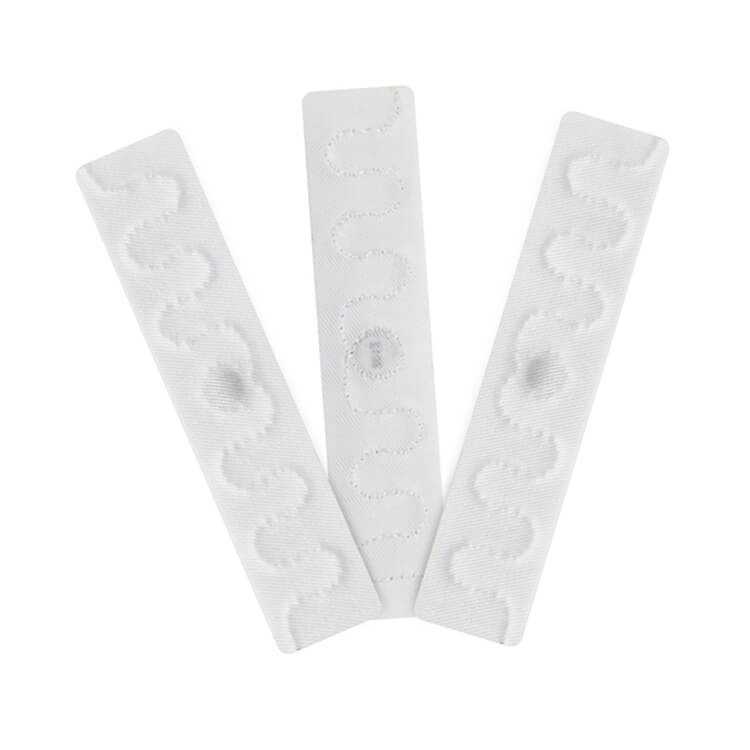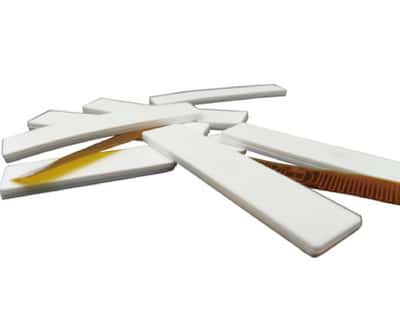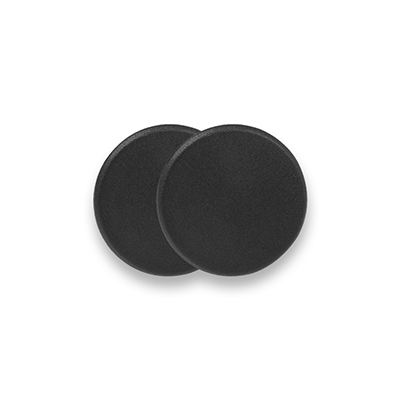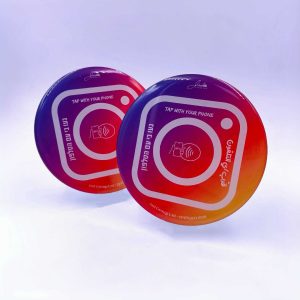Prior to purchasing RFID tags, you must first determine whether you have a good RFID system, the type of RFID tag chip you require, whether your use environment contains metal and moisture, whether high temperature resistance is required, the sensing distance required, and so on. You can then find the appropriate RFID tag for you more quickly.
Application: Questions
Do you want to achieve any business goals or solve any business problems?
Is there a current system that could help you resolve this issue and achieve this goal?
Describe and emphasize your preferred application.
How much do you intend to spend on the project?
Which nation or continent will RFID be used?
What products or items do you want to tag and keep track of?
How many reading zones or read points do you require?
Where do you want to place the antennas, computer components, readers, and similar items?
Do you require software and installation, or would you prefer to purchase tag/hardware and install it on your own?
RFID Tag Overview
Transponders also referred to as RFID tags, are small devices that use low-power radio waves to receive, store, and transmit data to nearby readers. RFID tags consist of some significant features like an Integrated circuit (IC) or microchip, a substrate material layer, and an antenna that keeps the components in one piece.
RFID tag types typically fall into three categories. There are active, passive, and semi-passive/battery-assisted passive tag types. The power source and transmitter for active RFID tags are built into the tag itself. There is no power source for the passive RFID tag.
They are powered by the electromagnetic energy transmitted by the RFID reader. In a passive tag configuration, semi-passive tags have a power source.
The three frequency types used by RFID tags are low frequency (LF), high frequency (HF), and ultra-high frequency (UHF) (UHF).
RFID tags come in a variety of sizes and designs and can be attached to a variety of surfaces. RFID tags are available in a wide variety of form factors, including dry inlays, wet inlays, wristbands, stickers, cards, labels, and a wide variety of other options.
You must choose an RFID tag that meets your requirements because they are available in a variety of read ranges, shapes, and sizes. Be certain of the application’s specifications before purchasing an RFID tag. You will need to focus your search on the particular characteristics that the required RFID tag must have in order to complete this process.
To determine the type of tag that is ideal for your application, you must answer a few questions. If you want to tag more than one object, it is best to use a tag that is applicable to all objects.
Knowing whether an RFID inlay/label or a hard-RFID tag is required is the first step in determining the type of tag to use.
RFID inlays/labels
RFID inlay is the label component of an RFID tag that encodes the identifying data. The RFID inlay is as small as a grain of rice and transmits data to the computer system via an RFID reader using radio-frequency waves.
The RFID inlay also consists of two components. It has a microchip or integrated circuit that stores identifying data. This integrated circuit is connected to antenna wires made of silver, copper, or aluminum. The antenna, in turn, transmits and receives radio-frequency signals.
The antenna and microchip are kept in the label, which is coated in plastic. Moreover, RFID inlays function when the data from the microchip is transmitted to the antenna of the RFID tag. At that point, the RFID reader’s antenna reads it. And it is sent to the host computer system for storage, analysis, or processing.
Wet and dry RFID inlays are typically distinguished. When an adhesive is applied to an RFID inlay, it is referred to as “wet.” This is done to adhere it to the pressure-sensitive liner that makes up the label. When an inlay is dry, it is adhered to the label without the use of an adhesive.
Barcodes and readable information can be printed on RFID inlays. RFID inlays are typically used more frequently than hard tag. And one of the primary reasons is hinged on the cost. The reading range, size, adhesive preferences, printability, and other characteristics of RFID inlays vary.
Merits
Reduced-cost
Simple to use
For mass encoding and printing, it can be used with an RFID printer.
Demerits
It is not weatherproof.
Only the adhesive attachment method is effective.
There are few metal-mount models.
RFID inlays/labels: Questions
How many items do you want to tag?
What is the average tag lifespan?
What size restrictions apply to the tag?
Will you tag metal, wood, plastic, or other surfaces?
Which model of RFID printer will you use if you want to work with one?
Are there extreme environmental conditions to consider, such as excessive cold, heat, moisture, vibrations, corrosive elements, and the like?
Do you require high-temperature adhesives?
Is user memory required? Aside from the unique product code, will the tag store anything else?
Do you need printing or custom coding?
Are perforations required between labels?
Hard RFID tags
RFID Hard tags are RFID tags made of ceramics, ABS, or plastics. RFID Hard tags are not paper-based, unlike labels and inlays. RFID hard tags are also designed to meet specific application requirements, such as enhanced cold and heat resistance, object embedding, and increased read range.
Due to their thickness and size, these RFID hard tags are more expensive than inlays and labels. Interestingly, these hard tags can be as low as $1 and as high as $15 for each tag. Similar to inlays and labels, RFID hard tags are relatively inexpensive when purchased in large quantities.
RFID Hard tags come in various shapes and sizes. They could be as small as a pencil or as large as an automobile license plate.
Merits
The features of the RFID hard tags are primarily what determine their functionality.
There are numerous attachment techniques.
Demerits
RFID Hard tags are more expensive than RFID inlays.
RFID hard tag encoding and labeling is a very slow process. Additionally, some models cannot function with a label.
RFID Tags: Questions
How many items do you want to tag?
What kind of surface do you want to tag? (Metal, wood, plastic, etc.)
How long-lasting are the tag s?
What reading level is required?
What are the RFID tag’s size restrictions?
Are there extreme environmental conditions you should investigate? (Excessive cold, heat, UV rays, etc.)
What attachment method will you use? Cable tiles, adhesives, screws, or rivets?
Do you need user memory?
Do you require printing or specialized coding?
What is your price range for each tag?
RFID readers: an introduction
RFID fixed readers are stationary, high-performance devices that can read and write tags in any RFID application. There are two types of fixed RFID readers. The first category consists of readers that are not integrated and are connected to antennas via coaxial cable. In contrast, integrated readers include both an antenna and a reader in a single device.
Assuming you have a basic understanding of the world of RFID, it is simple to set up fixed readers and use them as needed. You can also connect from 1-64 antennas via auxiliary multiplexer devices. Through an RFID tag used to track/monitor specific objects, you can collect data using the RFID reader.
RFID Fixed readers: Questions
Which nation will you use the RFID reader in?
Where will you mount the reader?
How quickly will the tags pass through the read zone?
How many tags do you wish to read at once?
With this reader, how many antennas do you want to use?
How will you influence the reader?
Will there be excess environmental conditions to look out for, like excessive moisture, heat, and cold?
Will the reader be connected directly to the host computer or through a network?
Do you require any GPIO functionality, such as light-stacks?
Reader Modules
Reader Modules are the computing component of the RFID reader. In most cases, they are integrated into an existing product design. They serve as the foundation for the production of a specialized RFID reader item. When not in use, RFID reader modules are useless. And the reason for this is that they are incomplete products.
RFID reader modules require additional engineering to be functional. When developing with RFID reader modules, the customer has greater flexibility in differentiating the frequency ranges of the modules. In addition, the customer can specify the processing power and sensor options, as opposed to being limited by the design of an older reader.
Since the customer pays for the hardware that the application requires, large-scale integrations are more cost-effective when the project uses RFID reader modules; in this case, customers would abandon readers that are engineered beyond the application’s needs and specifications.
RFID Reader Modules: Questions
Have you read the Reader Module Guide?
Which country will you use the RFID reader module in?
How many tags would need to be read simultaneously?
With the reader module, how many antennas would be used?
Introduction to Radio Frequency Identification Antennas and Cables
RFID antennas and cables are essential for systems with a non-integrated reader module or a fixed reader. Integrated fixed readers and handheld readers are manufactured with an onboard antenna. Therefore, purchasing an antenna is unnecessary for these types of readers. Antennas have some unique characteristics such as polarity, gain, and size.
Before selecting one, it is crucial to understand what the application requires. Coaxial cables are available in a range of lengths, connector types, and insulation ratings that correspond directly to the connectors on the antennas and the chosen readers.
When the power travels from the RFID reader through the cable to the RFID antenna, it dissipates and cannot be recovered. To ensure that each RFID antenna cable achieves the performance you desire for your application, you must take deliberate steps to reduce the volume of loss.
To choose the appropriate cable for the application, you must first select the antenna and reader.
The RFID antenna cable you select will depend on the following factors:
The required cable length to connect the reader and antenna.
From the antenna to the RFID tag, the desired read range is specified.
The antenna’s gain is utilized.
The loss increases as the cable length increases. However, you can minimize this loss with the use of a suitably insulated higher-rated cable. The disadvantage of using a cable with a higher rating is that it is very thick and difficult to work with because it does not bend like cables with a lower rating.
Additionally, if your preferred read range is short, you can use a cable with a lower rating. To maximize the read range, it is best to use a cable with a higher rating.
When selecting a cable, it is essential to consider the gain of the RFID antenna. This necessitates consideration of a variety of factors, including cable rating and length, reader power settings, and many others. When you consider the antenna’s gain, you will realize that it is of equal importance to the cable’s nature in achieving your objective.
Antennas & Cables: Questions
What reading range volume is required?
Can you always determine the RFID tag’s orientation in relation to the antenna position in your application and control it?
Do you have an idea of the ideal read zone based on dimensions?
Will the antenna be mounted indoors, outdoors, or on a vehicle?
Are there environmental factors to consider, such as excessive moisture, heat, or cold?
Exist available size restrictions?
Will brackets for mounting on the wall be required?
Which reader will you use?
Which antenna will you employ?
What is the separation between the antenna and the reader?
Does the cable need to be bent at an angle greater than 45 degrees before connecting to the antenna?
Introduction to RFID Printers
RFID printers encode RFID inlays or labels in addition to printing. RFID printers have numerous essential applications. And when combined with software, multiple rolls of tag can be printed automatically, efficiently, and quickly.
If you are using applications with inlays or labels, it is typically difficult to encode manually due to the volume. However, with RFID printers, you will be surprised at how fast you will print with little or no stress.
Unlike traditional printers, RFID printers do not require ink. With ribbon, which prints images or text on tags, they work properly. In contrast to labels with a plastic-type or poly surface, tags with paper faces require a different type of ribbon.
If you want the best results, you need printer software. One of the primary reasons for this is that you will be provided with standard features, such as label design. In addition, this software provides a user-friendly interface that eliminates the need to write programming codes.
RFID printers: Questions
What do you anticipate your daily, weekly, and monthly printing volume to be?
Have you determined the tag size that you intend to print?
Have you determined the desired resolution for the printed label?
What kind of printer are you looking for? Do you prefer a printer with network connectivity or one that connects directly to a host computer?
Do you believe Wi-Fi functionality will be required?
Printer Labels and Software Questions
Will you print paper tags or poly-faced tags?
What type of printer will you be using?
Will you use programming codes for the printer interface, or will you require an entirely different piece of software?
What functionality do you require from your printer software?
How many printers will the software use?
Conclusion
After reading this guide, it is essential to remember that you must exercise extreme caution before purchasing any RFID tag or equipment. Many people make the error of rushing into the market to buy RFID tags and related products without first gaining a thorough understanding of their peculiarities.
You must be certain of your application requirements before purchasing RFID tag and equipment. This will help you make the best decision.
















